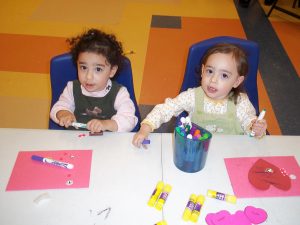 The basic architecture of the brain is constructed through an ongoing process that begins before birth and continues into adulthood. Early experiences affect the quality of that architecture by establishing either a sturdy or a fragile foundation for all of the learning, health, and behavior that follow. In the first few years of life, 700 new neural connections are formed every second. After this period of rapid proliferation, connections are reduced through a process called pruning, so that brain circuits become more efficient. Sensory pathways like those for basic vision and hearing are the first to develop, followed by early language skills and higher cognitive functions. Connections proliferate and prune in a prescribed order, with later, more complex brain circuits built upon earlier, simpler circuits. Scientists now know a major ingredient in this developmental process is the “Serve And Return” relationship between children and their parents and other caregivers in the family or community. Young children naturally reach out for interaction through babbling, facial expressions, and gestures, and adults respond with the same kind of vocalizing and gesturing back at them. In the absence of such responses, or if the responses are unreliable or inappropriate the brain’s architecture does not form as expected, which can lead to disparities in learning and behavior.
The basic architecture of the brain is constructed through an ongoing process that begins before birth and continues into adulthood. Early experiences affect the quality of that architecture by establishing either a sturdy or a fragile foundation for all of the learning, health, and behavior that follow. In the first few years of life, 700 new neural connections are formed every second. After this period of rapid proliferation, connections are reduced through a process called pruning, so that brain circuits become more efficient. Sensory pathways like those for basic vision and hearing are the first to develop, followed by early language skills and higher cognitive functions. Connections proliferate and prune in a prescribed order, with later, more complex brain circuits built upon earlier, simpler circuits. Scientists now know a major ingredient in this developmental process is the “Serve And Return” relationship between children and their parents and other caregivers in the family or community. Young children naturally reach out for interaction through babbling, facial expressions, and gestures, and adults respond with the same kind of vocalizing and gesturing back at them. In the absence of such responses, or if the responses are unreliable or inappropriate the brain’s architecture does not form as expected, which can lead to disparities in learning and behavior.